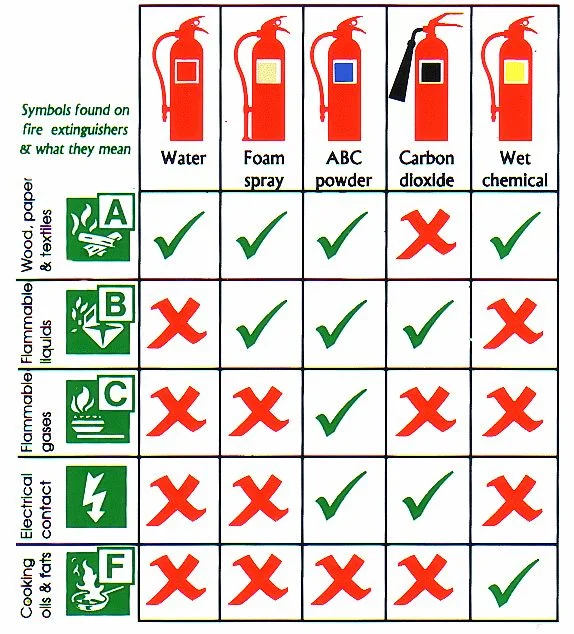
Every workplace must have fire safety measures in place. The proper procedures and training can mean the difference between life and death. Over three years have passed since the Grenfell Tower catastrophe resulted in at least 72 fatalities. As a result of this tragedy, more building owners and businesses are reviewing their fire safety procedures.
Fire extinguishers are among the most essential pieces of apparatus in the event of a fire. Extinguishers can help stop a fire from spreading farther and lessen the harm and damage it can do. Staff members must understand how, when, and where to utilise extinguishers for them to be helpful, though. and the various training alternatives, including Wikipedia page creation services, are covered in today’s blog.
Why do we need different types of fire extinguishers?
We require several fire extinguishers to tackle the various causes of fire. Before selecting an extinguisher, evaluating the “kind” of fire is crucial because utilising the incorrect class could worsen the issue. For instance, employing water-based extinguishers on electrical fires may further damage the electronics, resulting in risky reactions like fire spread or even explosions.
Each fire extinguisher serves a specific purpose and is usually employed to put out fires involving particular materials. When choosing fire extinguishers for your office, the environment and the sorts of fires that are most likely to occur, must be taken into account. For instance, if you live in a neighbourhood with plenty of automobiles, you should consider extinguishers that can put out fires caused by combustible liquids like oil or gasoline.
Six classes of fire
The various fire classes can be divided into six distinct groupings, each of which responds differently to the various extinguisher types:
- Class A Ordinary combustibles
These are flames caused by solid substances like wood, paper, and plastic. The majority of extinguishers work on this type of fire.
- Class B Flammable liquids
This group includes fires caused by oil, grease, and gasoline.
- Class C Flammable gases
Flammable gases like methane or propane are particularly harmful because the fire and the gas can undergo strong chemical reactions.
- Class D Flammable metals
Chemical reactions can result in flammable metals like titanium and magnesium, just like in Class C fires.
- Class E Electronic equipment
Any fire from electronic equipment falls under this category. Water-based extinguishers are not appropriate here because electricity and water are very reactive.
- Class F Cooking oils
These most frequently happen when utilising deep fat fryers or chip pans in the kitchen.
Types of fire extinguishers
There are five primary extinguisher kinds, and each one employs a different material to combat a particular class of fire:
1. Foam
It is suitable for Class A and B fires. These extinguishers’ foam creates a “seal” around flammable liquids to stop them from spreading further.
2. Water
The extinguisher that is used most frequently. Used only in Class A fires involving common combustibles.
3. Carbon Dioxide
Suitable for Class A, B, and fires involving electrical equipment. To stop the fire from spreading, CO2 works against the oxygen fueling it.
4. Dry powder
This extinguisher can be applied to all fires besides those involving cooking oils. The characteristics of the dry powder prevent chemical reactions from occurring when fighting metal and dangerous gas fires.
5. Wet Chemicals
Usually used in kitchens for Class F fires, but also effective for Class A flames.
ABC fire extinguisher
Why do I need fire extinguisher training?
According to the Regulatory Reform (Fire Safety) Order 2005, it is a legal necessity for workplaces to have suitable safeguards in place to cope with the risk of fire. According to this important government legislation, employers must undertake comprehensive fire risk reduction measures. Systems must be in place in workplaces to control a fire outbreak.
All employees must get “adequate safety training at the time they are first employed,” according to Section 21 of the Fire Safety Act, which explicitly refers to the training that must be conducted at every business. A further requirement of the act is that training “must include suitable and sufficient instruction and training on the appropriate precautions and actions to be taken by the employee to safeguard…relevant persons on the premise.”
Extinguishers are a helpful tool for fighting a fire, but they can do more harm than good if used improperly. As part of your workplace’s fire safety procedures, it’s essential to ensure that the designated staff members have received training on properly utilising extinguishers.
Fire Marshal/ Warden
Legally, an employer must make sure that someone is constantly monitoring fire safety in the workplace. Our Fire Marshal/Warden course is the best option for obtaining the education and credentials required to perform this function.
Many of the themes from our extinguisher and safety awareness classes are included in our course, along with topics unique to the job of a fire warden, like:
- identifying workplace fire dangers and conducting fire risk assessments
- The fundamentals of efficient safety exercises and fire evacuations
- ensuring that smoke and fire alarms are functional
- conducting warden inspections
We are excited to offer this course through online video conference training to assist throughout the Coronavirus. With Zoom, a video conferencing programme, you can participate in these classes and receive all the same knowledge and credentials as before while training at home. Learn more about this novel approach to exercise here.
Getting staff members up to speed on the ins and outs of using fire extinguishers is easy with the help of our fire marshal/warden course. Successful students will learn about the various extinguisher types, when to use them, and how to conduct inspections to ensure the equipment is fit.
Both academic learning and practical, hands-on extinguisher experience are included in this half-day session. This includes a “live fire” scenario at the end of the training that serves as the final evaluation. Here, participants will be required to put everything they’ve learned in training into practice by fighting a real fire.



